Aomori and more
- Sort by
- Popularity
- Name
-
Imari ware/Arita ware Imari yaki Arita yaki
- Ceramic
- Saga
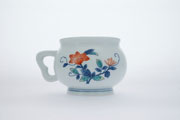
Imari ware and Arita ware are both porcelain produced around the town of Arita, in the Saga prefecture. Imari ware and Arita ware are light and delicate and both have excellent durability because their porcelain is produced from porcelain stone. T…
View more
-
Nambu ironware Nambu tekki
- Metal works
- Iwate

Nambu Ironware (called Nambu tekki in Japanese) is a form of metalwork produced in Morioka City and Mizusawa, Oshu City in Iwate prefecture. It is a traditional craft that was first created in the middle of the Edo period (1603-1868). The name �…
View more
-
Tobe ware Tobe yaki
- Ceramic
- Ehime
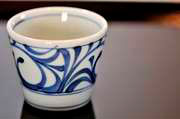
Tobe ware (called Tobe yaki in Japanese) is a form of ceramic ware produced around the town of Tobe in Iyo district of Ehime prefecture. Production began in the middle of the Edo period (1603-1868) and it was registered as a traditional craft by t…
View more
-
Karatsu ware Karatsu yaki
- Ceramic
- Saga
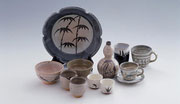
Karatsu ware (called Karatsu yaki) is a form of porcelain produced in the Saga and Nagasaki prefectures. This traditional craft has been produced since the 16th century in various forms, including tea bowls. One of the most notable features of Kar…
View more
-
Tsugaru lacquerware Tsugaru nuri
- Lacquerware
- Aomori

Tsugaru lacquerware (called tsugaru nuri in Japanese) is produced around the city of Hirosaki in Aomori prefecture. Lacquerware has been produced in this region since the middle of the Edo period (1603-1868), but it began to be called Tsugaru lacq…
View more
-
Iwayado traditional chest Iwayado tansu
- Wood, bamboo crafts
- Iwate

Iwayado tansu is a traditional woodwork made in the cities of Oshu and Morioka, Iwate prefecture. Tansu means chest of drawers. In addition to clothing or organization chests, daily use items like tea cabinets, book shelves, and low tables are mad…
View more
-
Tosa traditional Japanese paper Tosa washi
- Traditional Japanese paper
- Kochi
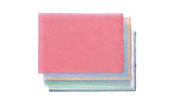
Tosa washi is a kind of traditional Japanese paper made in Kochi prefecture, both in the city of Tosa and around the town of Ino. In the past, it was used to make a holder for wallets and medicine or paper lanterns. Now it has a wide range of u…
View more
-
Joboji lacquerware Joboji nuri
- Lacquerware
- Iwate
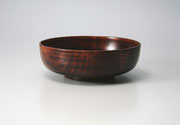
Joboji lacquerware (called Joboji nuri in Japanese) is produced in the town of Joboji in Iwate prefecture. More than 98% of the lacquer used in Japan is imported from China or other countries. The Joboji area is known as the leading producer of do…
View more
-
Hidehira lacquerware Hidehira nuri
- Lacquerware
- Iwate
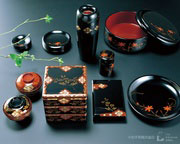
Hidehira lacquerware (called Hidehira-nuri in Japanese) is produced in the area around the town of Hiraizumi, in Iwate prefecture. The defining feature of Hidehira lacquerware is the use of gold leaf produced in the area around Hiraizumi, which re…
View more
-
Inshu traditional Japanese paper Inshu washi
- Traditional Japanese paper
- Tottori
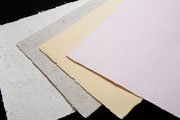
Inshu washi is a handmade traditional Japanese paper made in the former Inaba province, the eastern part of Tottori prefecture. The most famous type of paper is a textured drawing paper that is ideal for calligraphy and ink painting, boasting high…
View more
-
Yumihama traditional resist-dyed textiles Yumihama gasuri
- Woven textiles
- Tottori
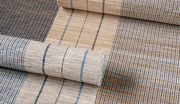
Yumihama traditional resist-dyed textiles (called Yumihama gasuri in Japanese) is produced near the city of Sakaiminato, Tottori prefecture. The name comes from Yumigahama, which is a curved shore that stretches for more than twenty kilometers (ab…
View more
-
Tosa cutlery Tosa uchihamono
- Metal works
- Kochi
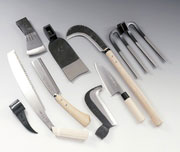
Tosa cutlery (called Tosa uchihamono in Japanese) are hammer-forged blades produced in the eastern to central part of Kochi prefecture, including the town of Ino and the cities of Kami, Nankoku, Tosa, and Susaki. Kochi prefecture was once a provin…
View more
-
Ozu traditional Japanese paper Ozu washi
- Traditional Japanese paper
- Ehime
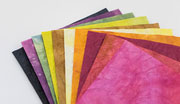
Ozu traditional Japanese paper (called Ozu washi in Japanese) is a handmade paper made in the town of Uchiko, Ehime prefecture. The history of papermaking of Ozu washi dates back to the Heian period (794-1185), and the current style of Ozu washi e…
View more
- 1

































































































































































































































































































